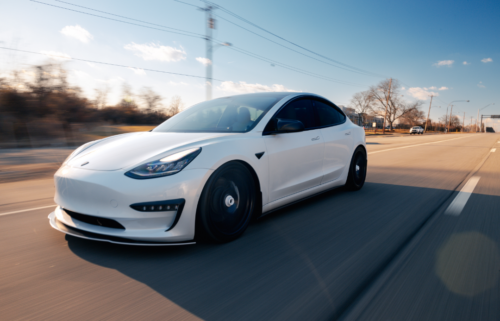How seat belt use has changed since the 1990s
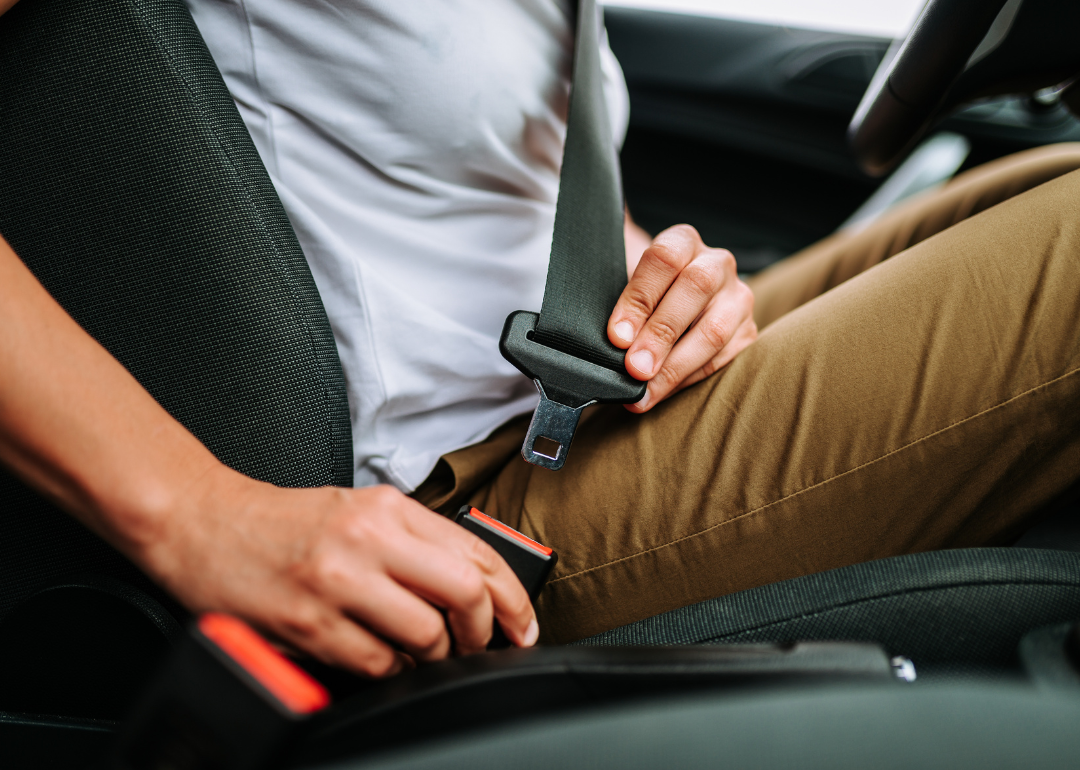
Branislav Nenin // Shutterstock
How seat belt use has changed since the 1990s
Close-up of woman in car fastening seat belt
For any motor vehicle driver or passenger, buckling in a seat belt before driving is an automatic habit, but this wasn’t always the case. Although English inventor Sir George Cayley created lap belts way back in the 19th century—for his design of a monoplane glider, rather than an automobile—and variations of that original design began to appear in cars as early as the 1930s, it took decades for them to become a standard safety measure on various modes of transportation.
While seat belts did not become mandatory in all vehicles in the U.S. until 1968, the state of Wisconsin was ahead of the curve, becoming the first state to require seat belts in 1961. Up through the 1950s, seat belts were simple over-the-lap straps that did not functionally restrain a person’s upper body during a collision. That changed in 1959 when a safety engineer with Volvo introduced the three-point safety belt we know as the standard today. Seat belt usage in 2021 exceeded 90%, which represented an improvement over a decade earlier—and a much more significant jump in use since the mid-1990s. It obviously wasn’t an overnight transition—it took a combination of laws, public education, and enforcement to transform seat belt usage into the standard practice that it is today.
Even as late as the 1980s, the required use of seat belts was surprisingly controversial. In 1984, a New York Times reader wrote in response to a column by Times staff writer Jane Brody questioning the constitutionality of ’80s-era seat belt laws, writing, “Unless the Constitution has been replaced with actuary tables, the governing principles of this country are still based on basic rights of individual freedom.” One 1984 survey found that 65% of Americans were against mandatory seat belts—as well as penalties for not wearing them—despite the already accumulating evidence that seat belt use saved lives.
To find out how wearing seat belts evolved into an ordinary practice, Taxman, Pollock, Murray & Bekkerman, LLC explored the history of seatbelt use over the past three decades, looking at and utilizing data from the National Highway Traffic Safety Administration.
Without further ado, here’s how wearing a seat belt went from controversial to commonplace.
![]()
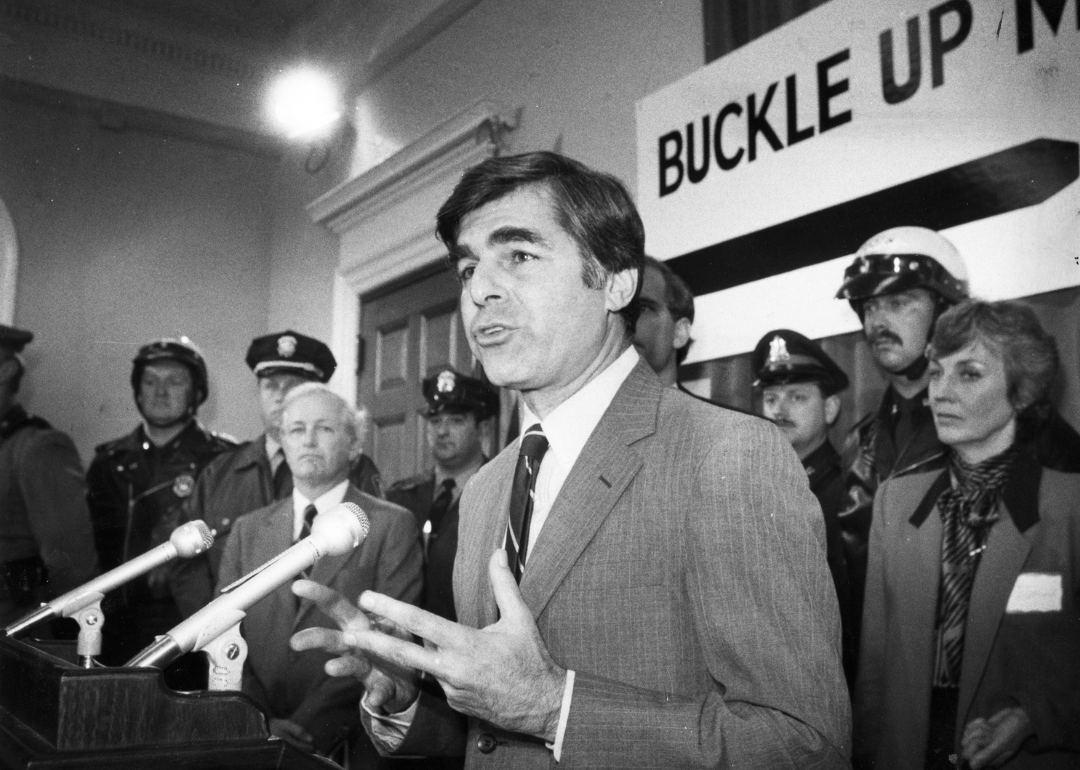
John Blanding/The Boston Globe via Getty Images
Before the 1990s, state laws drastically increased seat belt use among the public
Massachusetts Governor Michael Dukakis speaks after signing seat belt law
Although American vehicles have been required to have seat belts since 1968, actual seat belt usage was a different story. The National Ad Council ran an extensive, decades-long campaign encouraging drivers to “Buckle Up,” but things didn’t start to change in a meaningful way until the 1980s. According to the CDC, seat belt use grew from 11% in 1980 to 49% ten years later. Much of this increase can be attributed to the enforcement of state laws requiring seat belt usage. Another driving force in this increase was the National Highway Traffic Safety Administration’s “70% by ’92 program.”

Smith Collection/Gado // Getty Images
In 1991, the National Highway Traffic Safety Administration began the “70% by ’92” program
Person fastening seat belt in car
NHTSA aimed to reach its 70% seat belt usage goal with public awareness campaigns and enforcement efforts. One component was Operation Buckle Down, a program designed to encourage enforcement of safety-belt laws by increasing seat belt use among police officers. The administration also focused on community programs to raise awareness, including media events and local-use surveys. Through a Combined Accident Reduction Effort, known as CARE, seat belt citation rates, as measured through summer holiday periods, when traffic was at its highest, increased by as much as 226% from 1990-1991. This is largely owed to NHTSA’s increased enforcement policies, which called attention to people opting not to wear seat belts.
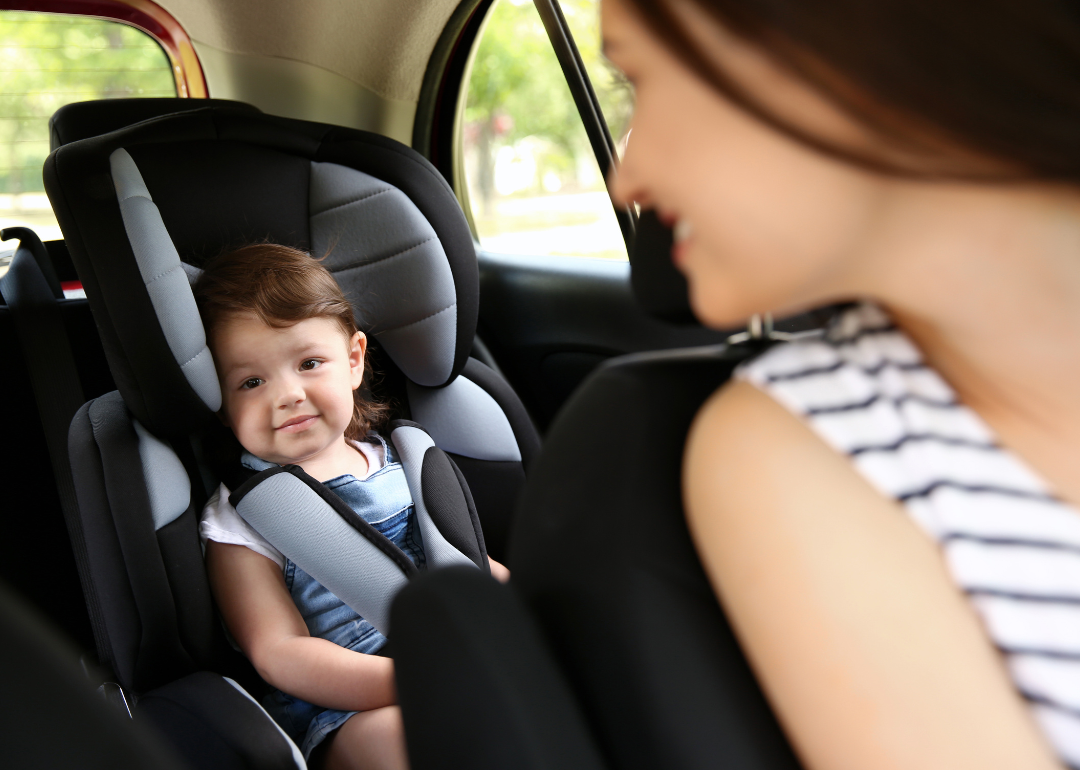
Africa Studio // Shutterstock
Use of seatbelts and other restraints among children grew significantly between 1994 and 1998
Mother looks over shoulder at child in rear car safety seat
One benefit of increased seat belt use was the fact that more children were subsequently protected from auto accident-related injuries and death—this was particularly true for children under the age of five. By 1998, the National Occupant Protection Use Survey found that 97.2% of children under a year old wore seat belts, and 91% of children ages 1 to 4 did the same. This was slightly less true for older children. The same research found that 71.8% of children ages 5 to 15 wore seat belts as of 1998. This nonetheless represented a nearly 15% increase from 1994.
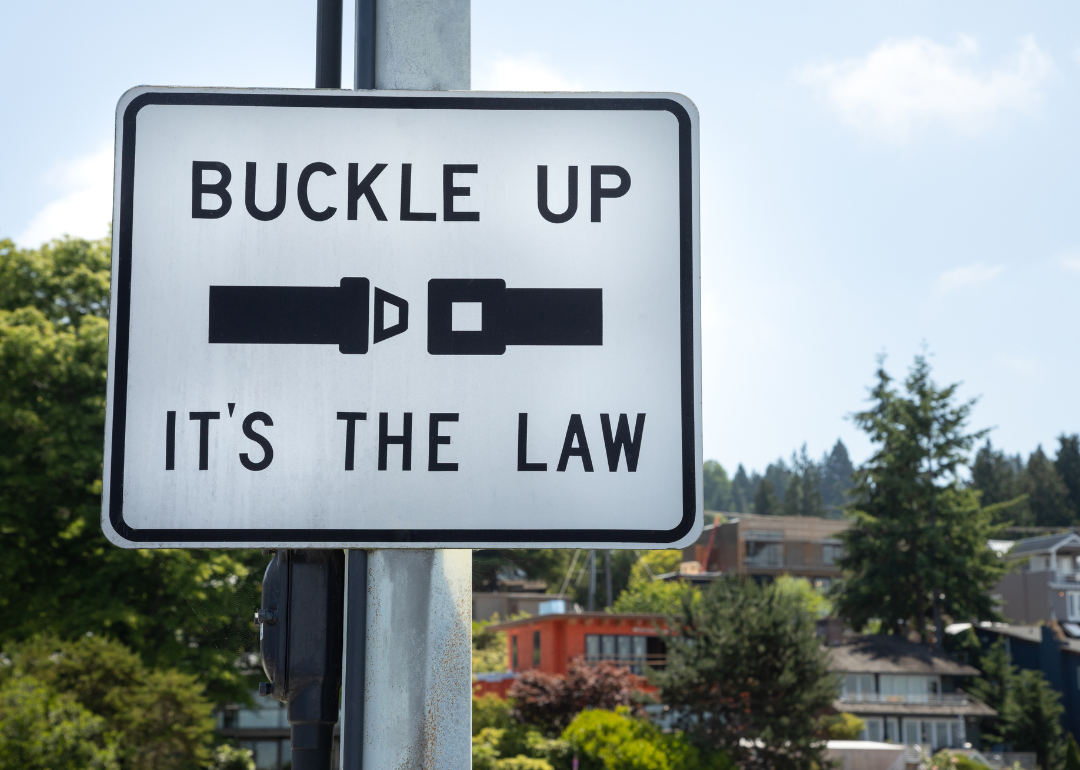
VDB Photos // Shutterstock
By 2010, 49 states had primary or secondary enforcement laws
Close up on a “Buckle Up. Its The Law” sign
Unsurprisingly, states with seat belt laws saw higher seat belt use rates. According to the CDC, in 2009, seat belt use averaged 88% in the 30 states (along with Washington D.C.) that had primary seat belt laws in place. Conversely, seat belt use averaged 77% in states with weaker seat belt enforcement laws. However, seat belt laws still varied state-by-state. In a few states, seat belt use was a secondary law for drivers and passengers older than a specified age, even if required for younger passengers.
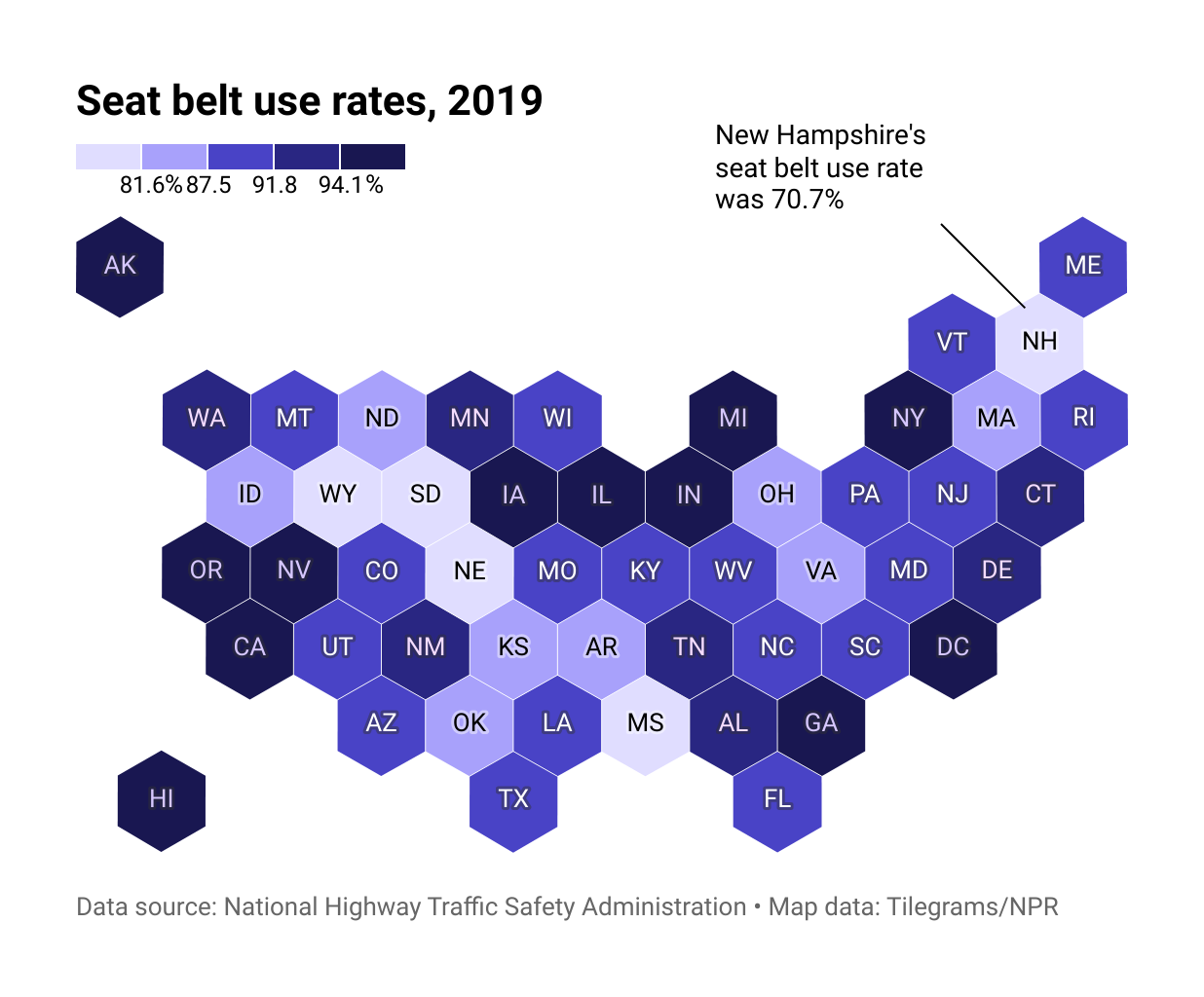
Taxman, Pollock, Murray & Bekkerman, LLC
New Hampshire remains the only state that doesn’t require adults to wear seat belts
New Hampshire currently has no seat belt law that covers drivers or passengers 18 or older. However, passengers younger than 18 are required to wear a safety belt when driving or riding in a vehicle. In all 49 other states and Washington D.C., seat belt laws apply to car passengers of all ages. The last attempt to pass a stronger primary seat belt law in New Hampshire took place in 2009 when a bill passed the state House but was quashed by the Senate. In 2018, a similar bill was simply tabled.
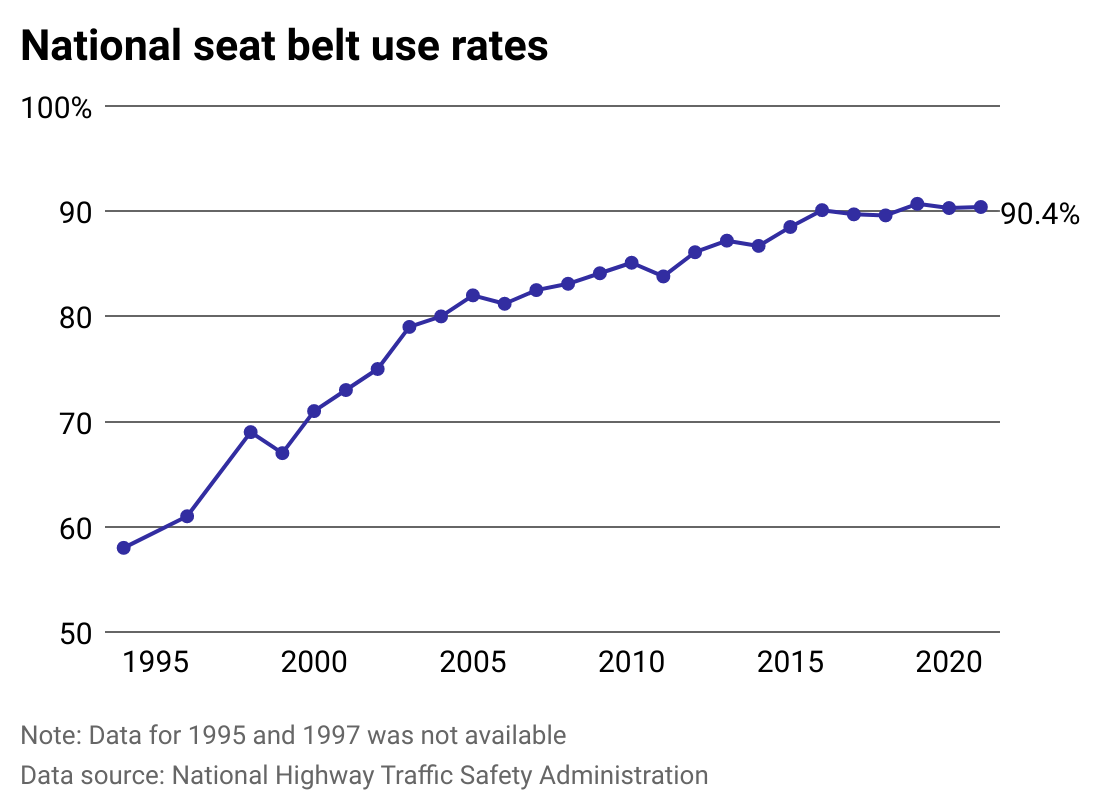
Taxman, Pollock, Murray & Bekkerman, LLC
Seat belt use in 2021 was 55.9% greater than in 1994
While seat belt usage notably increased from the 1980s to the 1990s, it has increased even more significantly since then. The national estimate of seat belt use in 2021 was 90.4%, up slightly from 90.3% in 2020. NHTSA found that overall, 2021 seat belt usage was highest in the western United States, with 94.5% of drivers using their seat belts. Meanwhile, the lowest percentage of people using seat belts was found in the midwestern United States (88.5%). Hopefully, seat belt usage and education will only increase in the coming decades.
This story originally appeared on Taxman, Pollock, Murray & Bekkerman, LLC and was produced and
distributed in partnership with Stacker Studio.

